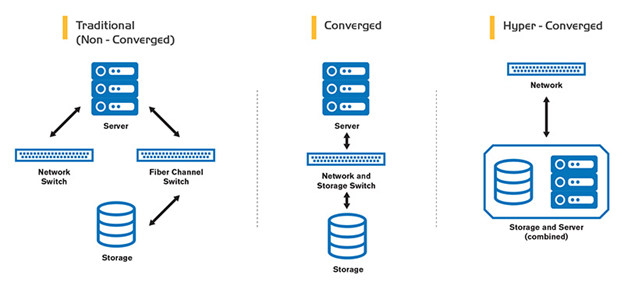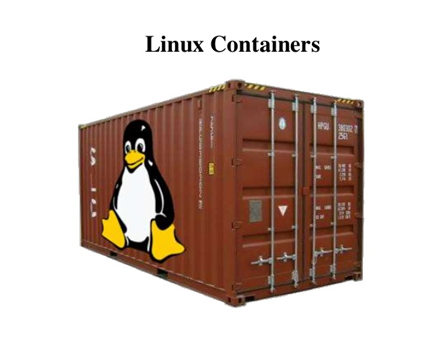While the Indian prime minister is flabbergasting the world with his decision of banning Rs. 500 and Rs. 1000 currency notes and people across the United States are rejoicing the victory of Republican candidate Donald Trump’s getting voted to power – it is quite sure that the world is undergoing a process of change, a change for betterment. On the technology front, organizations in droves are showing a profound inclination towards cloud technology to take advantage of cost savings and efficiency improvements over conventional on premise data center. The promise of self-service and pooling of resources help in boosting resource utilization and the ability to scale applications in a lightning-fast speed. From an economy standpoint, individuals are reaping rewards by moving workloads to the cloud. This is well summed and highlighted by a report published by Forrester, which cites that key developments in cloud will shape the industry in 2017, as clients will seek to gain proficiencies by leveraging a pool of networked resources to serve their customers.
For over a period of time, cloud technology has helped chief technology officers to stay ahead of the pack with its inherent characteristics. The recent Forrester report has enlisted a number of trends, of which the number one trend is – companies with higher budget, data centers, and intricate applications have started considering cloud as an optimal alternative to run critical business applications.

Going forward, the research states that around 38% of 1000 North Americans and European infrastructure technology leaders have accepted that they are building private cloud model, whereas 32% are procuring public cloud, 59% are with hybrid cloud and the remaining have tabled a plan to migrate to cloud platform in the next few months. To be precise, the overall cloud adoption in the subsequent year is going to be impressively high with the global public cloud market to enjoy the lion’s share, i.e. $146 billion in 2017, which was just $87 billion in 2015.
Let’s glean through some interesting factors that will not let any forward-looking leader to consider cloud an ‘out of syllabus’ subject:
Cloud Subscribers will Save Huge Capital Chunk
The flexible orientation of the cloud has always remained the driving force behind the rising adoption rate since its inception. Cloud benefits have extended beyond its metered billing parameter, allowing clients to control capital investment in the New Year, as cloud gains more maturity. In the present landscape, clients are leveraging multiple cloud environments.
As this consumption-based computing model allow clients to monitor their resource utilization and plan accordingly for future. The good news is there are a multitude of cost management tools available in the market today. Therefore, it is for sure that costs allied to cloud will not go up.
 Cloud Migration to Get Swifter
Cloud Migration to Get Swifter
The other trend that the world will witness is refactoring of software codes to leverage the elasticity of cloud. Simply subscribing public cloud hosting platform and keeping legacy applications – it is will not yield same expected results. Thus, rewriting the applications as per cloud framework gives businesses an ability to make the best out of the cloud technology.
It is no shocking that lift-and-shift migration process will incur a high cost. It is believed that in the year 2017, these lift-and-shift migration tools will increase the pace of cloud migration.
 Hyperconverged Infrastructure Model to Rise
Hyperconverged Infrastructure Model to Rise
Security issues in public cloud are one of the major reasons why companies hold themselves to migrate their critical and confidential data to the public cloud. Same as public cloud, private cloud computing model makes use of virtualization, automation, compute management, and standardization. And, it won’t be an overstatement that converging these capabilities is an expensive undertaking.
In this regard, Hyperconverged infrastructure to rescue as it facilitates clients with pre-configured compute and secure cloud storage capabilities to get their cloud implementations done in a hassle-free manner. It is observed that companies are embracing an HCI model for their private cloud development with an intent to take advantage of cloud’s scalability.

Linux Containers for Almost Every Public & Private Cloud Framework
Containers help businesses to smoothly run applications when migrating from one computing platform to another. Linux containers enable developers to customize and separate applications with their entire runtime environment. These open source technology based containers are designed to cutback intricacies and struggles between development and operations team by finely allocating the areas of responsibility.
The Forrester report suggests that these Linux containers will stay pertinent in almost every public and private cloud hosting platform. In an apparent scenario, developers will make use of such containers to expedite micro services development.

As New Year will unlock new trends in cloud adoption, it is better to educate yourself on each slight change, including developments in Hyperconverged Infrastructure to make the best out of your resources.
Before your counterparts outmaneuver you and leave you flabbergasted, fasten-up your belts and optimize your cloud strategy.
Read more at : Key Cloud Growth Trends for 2018






 Live Chat
Live Chat
